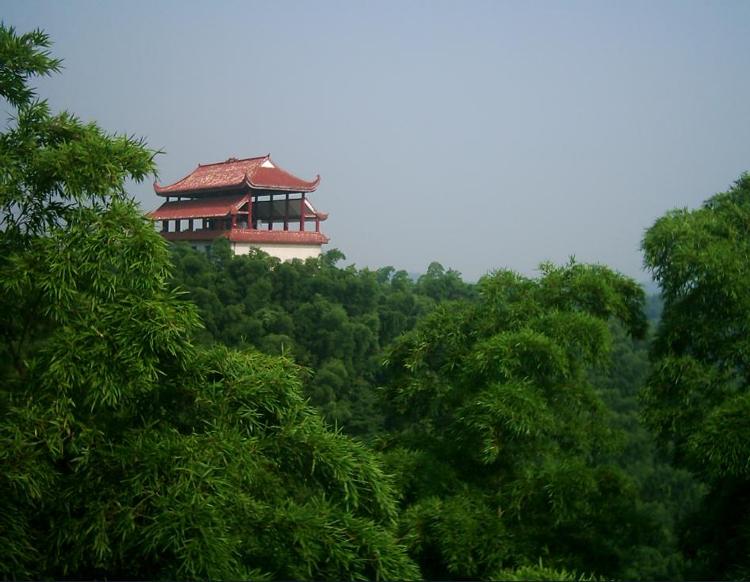Explore Ecological Environment Around Dongting Lake
East Dongting Lake National Nature Reserve
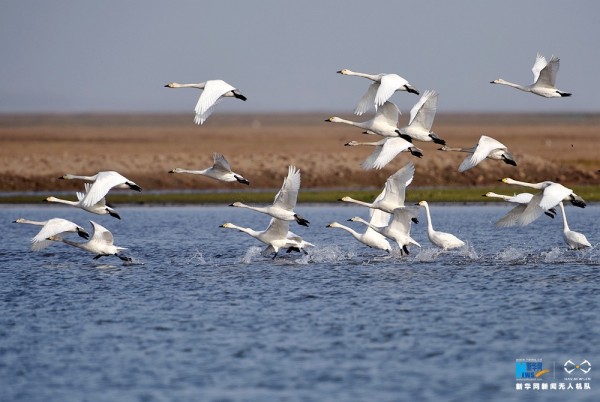
The photo shows little swans at the East Dongting Lake National Nature Reserve.
(Photo/Li Ga, Xinhua)
As the famous Chinese fresh water lake, second only to the Poyang Lake in Jiangxi Province, the Dongting Lake spreads wide on an area of 1,300 square kilometers. According to geologists, the lake area used to be part of an ancient anticline in south of the Yangtze River, but fell in a rupture during the movement of the Mount Yangshan 70 million years ago and became a lake.
Dongting Lake is composed of East Dongting, South Dongting and West Dongting. In ancient times, East Dongting Lake was a part of Yunmeng Pool. The East Dongting Lake Nature Reserve is one of China's 30 important wetlands in the Ramsar Convention on Wetlands. Every year, 217 species of migratory birds under state protection live through the winter here, such as white storks, white cranes, grey cranes and egrets. It will be a great fun if tourists take a boat tour in the lake, observe birds, listen to the waves, go fishing and taste delicious fish dishes in the nature reserve.
The Sanjiangkou Estuary (the confluence of Xiangjiang River, Yanjiang River, Jingjiang River) is another tourist attraction in Dongting Lake, where the lake meets the Yangtze River. As the lake's water is clear while the water from the river is turbid, the clear-cut currents were called by the ancients as "River Meeting"-a fantastic sight rarely seen elsewhere.
To expedite the transportation between Hunan and Hubei provinces, in recent years, the government has built Yueyang Bridge on the Dongting Lake-the longest highway bridge in China. Spanning over East Dongting Lake, the bridge is 10, 174.2 meters long, and is the first bridge with three main towers suspended with double-cable support in China. In addition to relieving traffic pressure, the bridge provides an express thoroughfare to facilitate emergent transportation of goods for floor control.

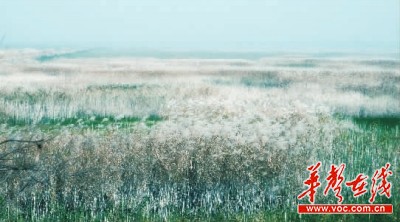
Transport: Bus Nos. 5 and 20
Tel :(86)730-8635328
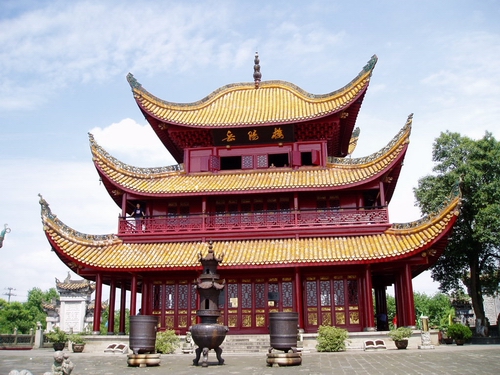
Junshan Scenic Area
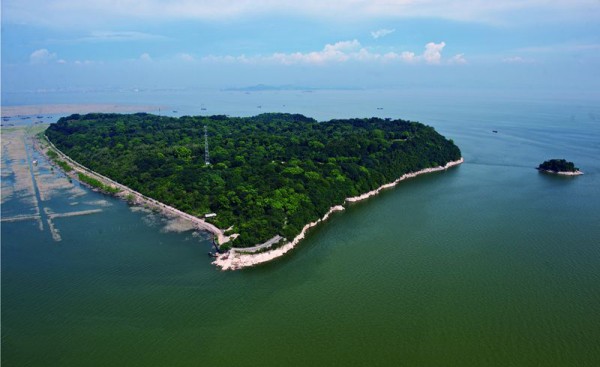
Dedicated to the two wives of Emperor Shun-Ehuang and Nuying the temple is 70 meters north of the tombs of the two Empresses. Comprising three courtyards, this building covers an area of 960 square meters. The 400-character-long couplets on the gate of the first courtyard are about this temple. The four-character plaque on the gate of the second courtyard reads "Whatever requested will be granted". The third gate leads to the main hall which houses the statues of the two empresses.
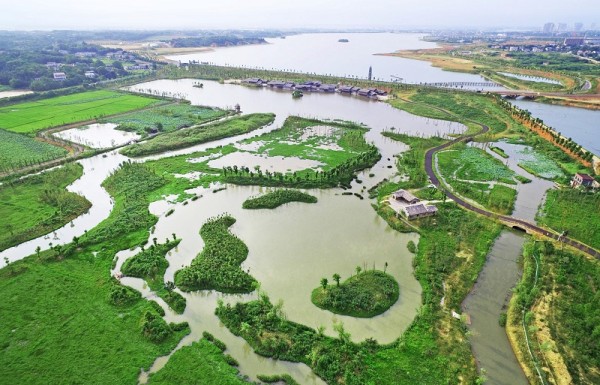
The photo above taken on August 9 shows a green natural scene seen in Yangsha Lake National Wetland Park, Xiangyin County, Yueyang City.(Photo by Li Jian, Hunan Daily)

In recent years, the county has always been upholding the basic principle of ¡®priority should be given to conservation, reasonable restoration and utilization, and sustainable development¡¯. It has built the wetland park into an ecological and leisure touring spot. It combines such functions as freshwater fish museum, ecological farm, lotus flower garden, water lily garden, rare animal species domestication base, and Hunan specialized fish village. The water has therefore become more translucent and natural environment much better. (Photo by Li Jian, Hunan Daily)
Bamboo SeaThe Bamboo Sea scenic area is located in the Taohuajiang National Forest Park, covering a total area of 761 hectares. It is the largest ecological scenic area with bamboos in south China, and has been considered as a must-see spot. The whole scenic area provides an opportunity for people to be close to the nature, and to forget noisy urban life.
The whole bamboo sea area consists of numerous hills, generally with a height from 100 to 250 meters. The highest peak and the lowest altitude are respectively 335 meters and 37 meters.
Green bamboos are seen along the road. Climbing to the red building at the top of the bamboo sea, you can overlook the whole area, appreciating the flowing wave of bamboos, and singing birds.
The bamboo sea attracts numerous tourists from home and abroad every year. The former Chinese premier Wen Jiabao wrote his inscription ¡°Town of Phyllostachys Pubescens¡± here.
According to the development plan, Taohuajiang Bamboo Sea will build a demonstration base for ecological culture and tourism.
Bamboo Culture
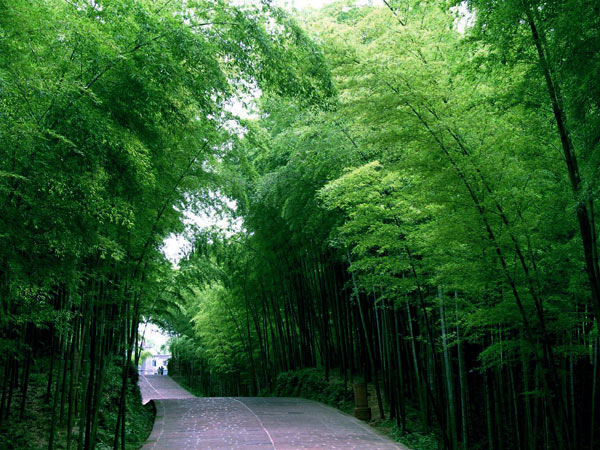
Today, bamboo is widely used for household articles like sleeping mats, beds, pillows, chopsticks, spoons, baskets, handheld fans even kinds of furniture. It is also used to make traditional Chinese musical instruments, such as flute Di, and Xiao. Besides, bamboo is also adopted in Chinese traditional medicine.
Bamboo is viewed as a symbol of traditional Chinese values. Ancient Chinese people designated bamboo as one of the ¡°Four Gentlemen¡± of plants, together with plum, orchid, and chrysanthemum. Bamboo¡¯s considerable resistance to stretching and its ability to support weight makes it a symbol of integrity, elegance and simplicity.
Taohuayuan/ Peach Blossom Valley


Besides, Taohuayuan is one of the four holy places of Taoism in China, together with E¡¯mei Mountain, Wudang Mountain and Hengshan Mountain. The 35 caves and 46 paradise places there integrate the culture of Taoism, Buddhism and Confucianism.
Taohuayuan Scenic Area is composed of four scenic parts, namely Taoyuan Hill, Taohua (peach blossom) Hill, Qinren (people of Qin Dynasty) Village, and Taoxian (fairy of peach blossom) Range.
Taohua Hill
Taohua Hill scenic area covers an area of 2 square km, consisting of 30 scenic spots such as the archway, Wuliu Lake, Taohua stream, and several bridges, temples, pavilions and ancient residence. It is said the Qinren ancient cave is the entrance to the ¡°Peach Colony¡± in Tao Yuanming¡¯s essay.
Taoyuan Hill
Taoyuan Hill scenic area covers an area of 2.5 square km, with 10 scenic spots open to visitors. The area boasts splendid mountain scenery. According to a legend, long time ago, there was white fish demon stirring up big storms in the lake in front of the hill to flood farm land and even eating people and animals. A brilliant boy named Huang Wen subdued the fish but was trapped under the lake. Since then, people here lived a harmonious life, and the landscape has turned more attractive.
Taoxian Range
Taoxian Range covers an area of 1.5 square km, featured with idyllic scenery. As a romantic legend said, Zhinv, one of the seven fairy sisters, met cowherd Niulang here and they fell in love with each other. Because of the intervention of the Goddess of Heaven, the two could only meet once a year on Qixi Festival ¨C the Chinese Valentine¡¯s Day, falling on the seventh day of the seventh lunar month. And Zhinv assigned the fairy of Peach Blossom to build here a fairyland on earth.
Qinren Village
Updated on October 31, 2018
